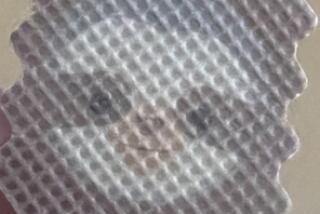HEALTHWATCH : Head Lice Cases Are Not Just Nit-Picking : Immediate isolation of the affected individuals and lots of thorough cleaning are all indicated should the parasites be detected.
- Share via
Workers at the Simi Valley Hospital Day Care Center don’t just sit around scratching their heads when they see children sitting around scratching their heads.
Such head-scratching by a child could be a sign of pediculosis.
In other words, it could be an indication of head lice--tiny parasites that survive by sucking human blood, and that are easily spread by person-to-person contact. It is especially common among children in a close setting.
“If we noted a case of lice, the child would be isolated and the parents would be called,” said Sandy Englen, director of the hospital’s center. “At that time we would bag up any kind of stuffed toy, anything that can’t be washed in a washing machine, and put it in our storage facility for 10 days to two weeks.”
Hats, dress-up clothing, carpeting--anything that the child might have come in contact with--would be thoroughly cleaned, Englen said. And while the child is taken home, not to return until free of lice and nits (or lice eggs), the other children in the facility would be inspected head to neck.
“We would take them into a well-lit area,” said Englen. “We’d start at the nape of the neck and move hair follicles to the side looking for nits. They look like pieces of dandruff.”
Englen said the center has never had a severe epidemic of lice.
In the past, lice was thought to be associated with the dirtiness of a child--and thus it carried a certain stigma--but that has proven not to be true, local health care workers say.
Where lice come from, however, is not an easy question to answer.
“There’s always a pool of some human beings with lice on them,” said Andy Calderwood, of the Santa Barbara Museum of Natural History. To determine how the first person came in contact with the parasite, he said, “we might have to go back a millennia.”
Dr. Brian Prestwich of the West Ventura Clinic said he sees a lot of cases of lice in the Ventura Avenue area.
“It’s particularly common in lower socioeconomic groups because more crowded living situations exist,” Prestwich said. “They pick it up at school or day care, and if there’s a crowded living situation at home, it spreads.”
Jean Borowsky, the visiting school nurse for the Simi Valley Unified School District, said she was called to check out a single case of lice last week during summer school at Garden Grove Elementary School. When she got to the school, she discovered three additional cases.
The cause of lice may be fairly uncertain, but there are plenty of remedies out there. Most are in the form of shampoos. Doctors suggest, among others: Kwell shampoo, Nix Creme Rinse, A-200, RNC Shampoo, all of which contain some level of insecticide. Kwell contains the insecticide Lindane
“Lice can be a horrendous problem for some people, but usually just one application of Nix will do it,” said Dr. Donna Jones of Las Posas Family Practice in Camarillo. “If we Kwelled everyone at the same time, we might eradicate lice from the face of the earth.”
But pharmacist Nancy Lee of the Port Hueneme Drug Co. said some strains of lice have built a resistance to Lindane, so it is less effective than it used to be.
Lindane, said Lee, comes in the form of a lotion or shampoo. She said the lotion is not recommended for infants, small children or pregnant women because it can be toxic when absorbed through the skin. Overuse of products containing Lindane have been linked to problems with the nervous system, including seizures.
The other brands are less toxic, but still are not recommended for infants younger than two months old or pregnant women without a doctor’s approval, Lee said.
Though the treatments take care of the living lice, experts say they may not necessarily get rid of the nits, which cling to the hair, and from which come the next generation of lice.
“No shampoos are 100% effective in killing the nits, no matter what they say,” said Borowsky. “Some children who are infested have as many as 200 nits in their hair. To comb them out takes a long time.”
Borowsky suggested a new treatment called Step 2, to be used after a shampoo, which specifically loosen the eggs from the hair.
“It’s really important to get every nit out of the hair,” she said. “If you don’t, you’re back where you started.”
More to Read
Sign up for Essential California
The most important California stories and recommendations in your inbox every morning.
You may occasionally receive promotional content from the Los Angeles Times.








